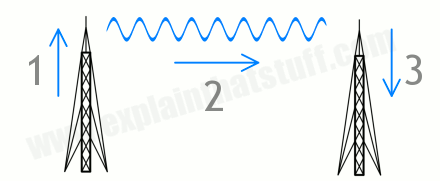- Related articles
- What Is Network Interface Card Architecture?
- What is motherboard network card?
- What is Packet over Sonet?
- What Is GYTZA Fiber Optic Cable?
- Optical Transceivers for Cisco SF350-48P-K9-EU Switch
- The difference between DWDM and WDM
- All Cisco SFP-OC48-SR's information (List price, Specs, Datasheet PDF, Compatibility matri
- The Difference Between X2 and XFP
- All Cisco DWDM-XFP-50.92's information (List price, Specs, Datasheet PDF, Compatibility ma

Definition
In electronics and telecommunications, a transmitter or radio transmitter is an electronic device which, with the aid of an antenna, produces waves. In addition to their use in broadcasting, transmitters are necessary component parts of many electronic devices that communicate by radio, such as cell phones, wireless computer networks, Bluetooth enabled devices, garage door openers, two-way radios in aircraft, ships, spacecraft, radar sets and navigational beacons. The listening device part of a telephone is the receiver. The handset that sometimes contains the device and also the headset (audio) that can also contain the above device.
Difference
The main difference between a transmitter and a receiver is that a transmitter gathers and decodes information and the receiver displays the information in an audible and/or visual form that consumers can view or listen to. The most well-known and oldest of inventions to use this system is the radio.
Application
In many devices which implement radio electronics technology, the transmitter and receiver work together to emit both sound and visuals to consumers. The transmitter generally is composed of an oscillator, a modulator, and separate amplifiers for both radio and audio frequencies. This allows the device to transmit both audible and visual waves. In most areas, the use of transmitters is regulated because improper use could result in the dangerous crossing of signals.
Difference between transmitter and receiver antenna
The traditional transmitter and receiver technologies used analog signals to allow consumers to hear music on the radio and both listen to sounds and watch visuals on the television. Today, digital technology is replacing more outdate devices with better and clearer sounds and images. In order for digital signals to be received, however, consumers must own a digital transmitter and receiver or a device which has them.
Difference between Bluetooth receiver and transmitter
All wireless audio systems share some common components: an audio source, a transmitter, a receiver, and an audio reproduction device. The audio source is the device that contains the audio signal. The transmitter receives the audio signal from the source and then transmits the signal wirelessly. The receiver picks up this wireless signal and passes it to the audio reproduction device which plays the signal back as audible sound.
Conclusion
When choosing electronics, it is important to pick items that have receivers designed for the signals one hopes to listen to or watch. For instance, a digital receiver will often not read an analog signal and vice versa. Specialized converter boxes can be purchased to convert a receiver into the correct kind for the signal being used. This is especially important now that many television stations are required by law to feature all digital programming because many consumers own televisions with out-dated analog receivers.






















































